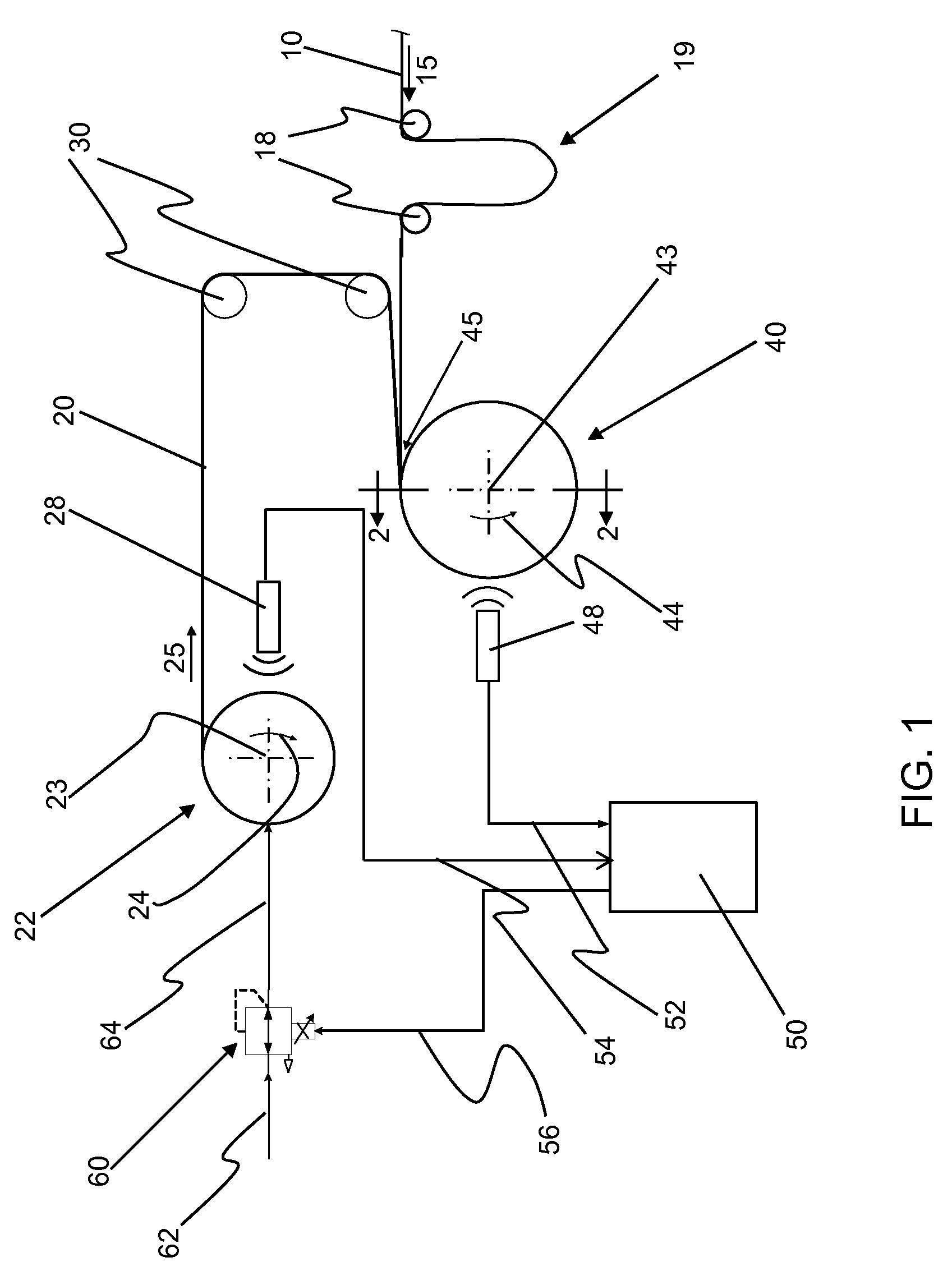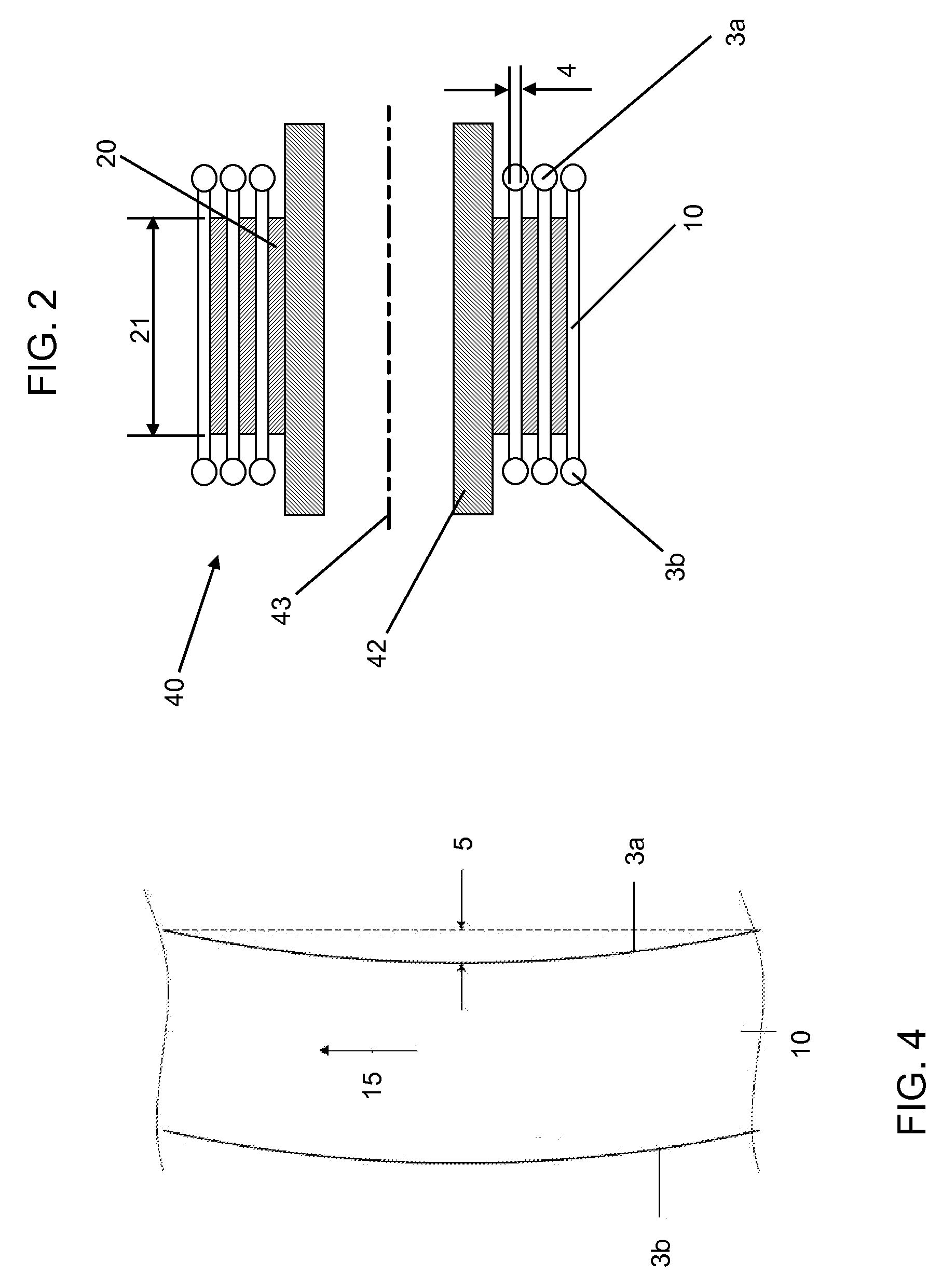Winding glass ribbon by tensioning interleaving material
a technology of interleaving material and winding method, which is applied in the direction of manufacturing tools, transportation and packaging, synthetic resin layered products, etc., can solve the problems of risking damage to glass ribbon, not advisable to have direct surface to surface contact of glass to itself, and extremely sensitive to surface defects, etc., to achieve better handling, better density of rolled products, and better storage
- Summary
- Abstract
- Description
- Claims
- Application Information
AI Technical Summary
Benefits of technology
Problems solved by technology
Method used
Image
Examples
example-1
[0078]A glass ribbon having a thickness of 150 microns was wound into a roll together with an interleaving material of irradiated cross linked Ethylene Vinyl Acetate (EVA) copolymer foam having a thickness of 1 / 32 inch, a width of 11 inches (28 mm), and a density of 6 lbs. per cubic foot (0.1 grams per cubic cm) (available from FLEXcon of Spencer, Mass. as FLEXcon P.E.F. 32 white no PS). The roll was started by winding the interleaving material around a roll core (having a nominal diameter of 20 inches (508 mm), 18 inch (457 mm) minimum diameter, and 24 inch (610 mm) maximum diameter), and then feeding glass ribbon to a nip formed by the interleaving material. The parameters for winding the roll were as follows:
[0079]the roll was wound at a speed of 12.5 to 28 feet per minute (
[0080]the diameter of the finished roll (as measured to the outermost layer of the glass ribbon and interleaving material) was less than 29 inches
[0081]the breaking torque applied to the interleaving material ...
example-2
[0088]A glass ribbon and interleaving material were wound together into a roll in the same manner, and with the same equipment, as set forth in Example 1, except that the pneumatic brake was set at 5.5 in-lbs (0.62 Nm) of torque, 12 psi (0.084 MPa), for the entire rolling process, whereby it applied a tension of approximately 0.07 pounds per linear inch (0.013 kg / cm) to the interleaving at the start of rolling, which tension linearly increased to 0.5 pounds per linear inch (0.09 kg / cm) by the end of rolling. The roll of glass ribbon and interleaving material did not have straight sidewalls.
[0089]It should be emphasized that the above-described embodiments of the present invention, particularly any “preferred” embodiments, are merely possible examples of implementations, merely set forth for a clear understanding of various principles of the invention. Many variations and modifications may be made to the above-described embodiments of the invention without departing substantially fro...
PUM
| Property | Measurement | Unit |
|---|---|---|
| pressure | aaaaa | aaaaa |
| pressure | aaaaa | aaaaa |
| thick | aaaaa | aaaaa |
Abstract
Description
Claims
Application Information
 Login to View More
Login to View More - R&D
- Intellectual Property
- Life Sciences
- Materials
- Tech Scout
- Unparalleled Data Quality
- Higher Quality Content
- 60% Fewer Hallucinations
Browse by: Latest US Patents, China's latest patents, Technical Efficacy Thesaurus, Application Domain, Technology Topic, Popular Technical Reports.
© 2025 PatSnap. All rights reserved.Legal|Privacy policy|Modern Slavery Act Transparency Statement|Sitemap|About US| Contact US: help@patsnap.com



